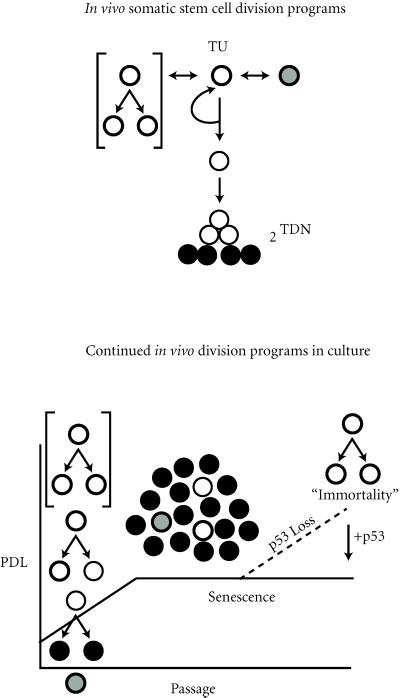Figure 4.
Asymmetric cell kinetics model for cellular senescence. Top, somatic tissue stem cell (bold-lined circles) turnover unit (TU). In vivo there are three stem cell kinetics states: highly regulated symmetric kinetics that produce two stem cells (bracketed); dormancy (stippled circle); and asymmetric cell kinetics, the most populated stem cell kinetic state in most tissues [21, 22, 23, 24]. TDN, the number of transit cell generations before terminal arrest (closed circles), varies in different tissues from 0.0 to n. 2TDN = 0.5 × number of transit cells in the TU [24]. Bottom, the ex vivo continuation of in vivo asymmetric cell kinetics results in cellular senescence. Because symmetric stem divisions are rare and possibly proapoptotic [31], asymmetric TU kinetics predominate in culture. The dilution of asymmetric stem cells by accumulating nondividing terminal cells is responsible for the observed decline in population doubling rate. Loss of p53 function in cell culture prevents senescence by allowing asymmetric stem cells to divide symmetrically; resulting in the exponential division that characterizes immortalization. In support of this model, reconstitution of normal p53 function in immortal cells restores asymmetric cell kinetics and senescence. PDL, cumulative population doublings.

